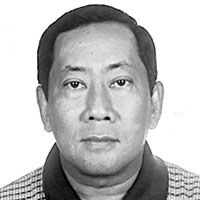Remembering Gen. MacArthur's 'I shall return'

Sixty-seven years ago today, Gen. Douglas MacArthur fulfilled his famous and often repeated promise that he made to the Filipino people when he arrived in Australia after his harrowing escape from the island of Corregidor by PT Boat, “I Shall Return”. This was Gen. MacArthur’s promise that became the rallying cry for a beleaguered nation caught in the Second World War and suffered through a humiliating Japanese occupation from 1941 to 1944.
Gen. MacArthur’s wading ashore from a barge in the company of then Philippine President Sergio Osmeña Sr. with Carlos P. Romulo has been one of the most iconic black and white photographs of World War II akin to the famous raising of the American Flag in Mt. Suribachi in Iwo Jima. MacArthur’s promise of “I Shall Return” was radioed to Filipino guerrillas here under an American civilian, Col. James Cushing. These words became the wrapper in cigarettes and chewing gum which you can find on display in Hotel Alejandro, Tacloban City, the country’s only museum hotel.
The Leyte Landings in Red Beach was actually the result of an earlier but almost totally unknown incident that happened in Cebu in March 1944, when the flight of Admiral Mineichi Koga and his Chief of Staff Admiral Shigeru Fukudome (Koga took over the command of the Imperial Japanese Combined Fleet from Admiral Isoroku Yamamoto, the architect of the infamous Pearl Harbor attack who was ambushed by US fighters months earlier) flew from his headquarters in Koror, Palau on its way to Davao, but were caught by a strong typhoon and were forced to fly towards the Visayas.
The Kawanishi flying boat of Admiral Koga disappeared somewhere in the Visayas, while Admiral Fukudome’s flying boat crashed a couple of kilometers from the shore of San Fernando, Naga, Cebu. The Japanese survivors were taken by the guerrillas under Col. Cushing to the Cebu Area Command (CAC) in Barangay Tabunan facing Mt. Manunggal, where they were later freed due to attacks against civilians by Japanese troops. But found in the flotsam of that crash, was the Z-Plan or Sho-Plan of the defense of the Philippines and the remaining islands still under Japanese control.
These plans were put on board the US submarine, the USS Crevalle in Basay, Negros Oriental (you can read this story in two books, The Koga Papers by Col. Manuel F. Segura or The Rescue by Steven Trent Smith) and brought to Gen. MacArthur’s headquarters in Australia, where intelligence found that the weak spot in the Philippines was in Leyte. Hence Gen. MacArthur decided to call off the planned invasion off Sarangani Bay in Mindanao and began planning for the invasion of the island of Leyte.
A few years ago, I interviewed on my TV show, Mr. Jim Zobel (no he is not related to the rich Zobels of Makati), the archivist of the MacArthur Memorial in Norfolk, Virginia who assured me that I could get any information about Gen. MacArthur from his office. While Gen. MacArthur had his photo opportunity for the whole world to see with that dramatic photograph going ashore in Red Beach, I did see a “not-so-secret-anymore” photo of Gen. MacArthur on board a PT-Boat docking in Tacloban City just hours after the landing forces cleared Tacloban of enemy snipers.
As the story goes, Gen. MacArthur told his aides that he left the Philippines on a PT-Boat, he would return back to the Philippines also on a PT-Boat. But then that particular return via PT-Boat wasn’t as dramatic or as spectacular as he wanted, hence he went back to the flagship and decided to go ashore like the rest of his troops using a landing craft… and that has become one of the famous myths of the Leyte landings.
Meanwhile the invasion of Leyte triggered two famous incidents. On Oct. 19, a day before the landings when Japanese observation planes spotted the American fleet steaming towards Leyte Gulf, Vice-Admiral Takijiro Onishi formed the Special Attack Unit from the 201’st Flying Group in Mabalacat, Pampanga and flew to attack the US Navy off Leyte Gulf carrying 250-lb bombs. They were called the Tokubetsu Kogekita or Tokko Tai (Divine Wind).
The Leyte landings in Tacloban also triggered the famous Battle of Leyte Gulf which historians declared as “The greatest naval engagement ever fought) which commenced on Oct. 23-26,1944. There are actually four major naval battles here, the Battle of Sibuyan Sea (where the Super Battleship Mushashi was sunk) the Battle off Samar, the Battle of Cape Engaño and the Battle of Surigao Strait. All in all, there were 282 American and Japanese ships that engaged in this battle, while in the famous battle of Jutland during the First World War, there were 250 British and German ships that fought in battle. I love writing these pieces of history in the hope that the Filipino people would never forget our World War II past.
* * *
For e-mail responses to this article, write to [email protected] or [email protected]. His columns can be accessed through www.philstar.com.
- Latest
- Trending





























